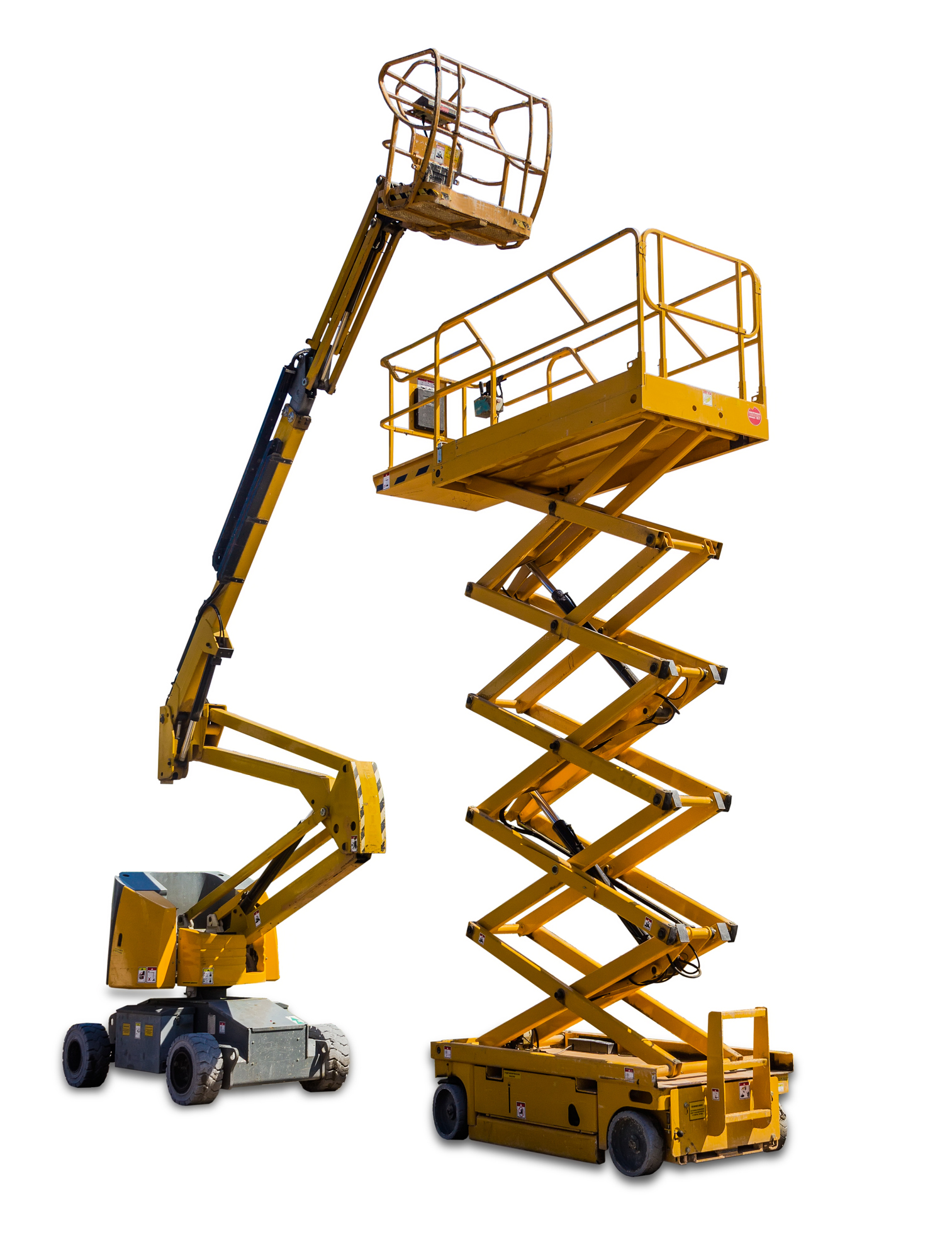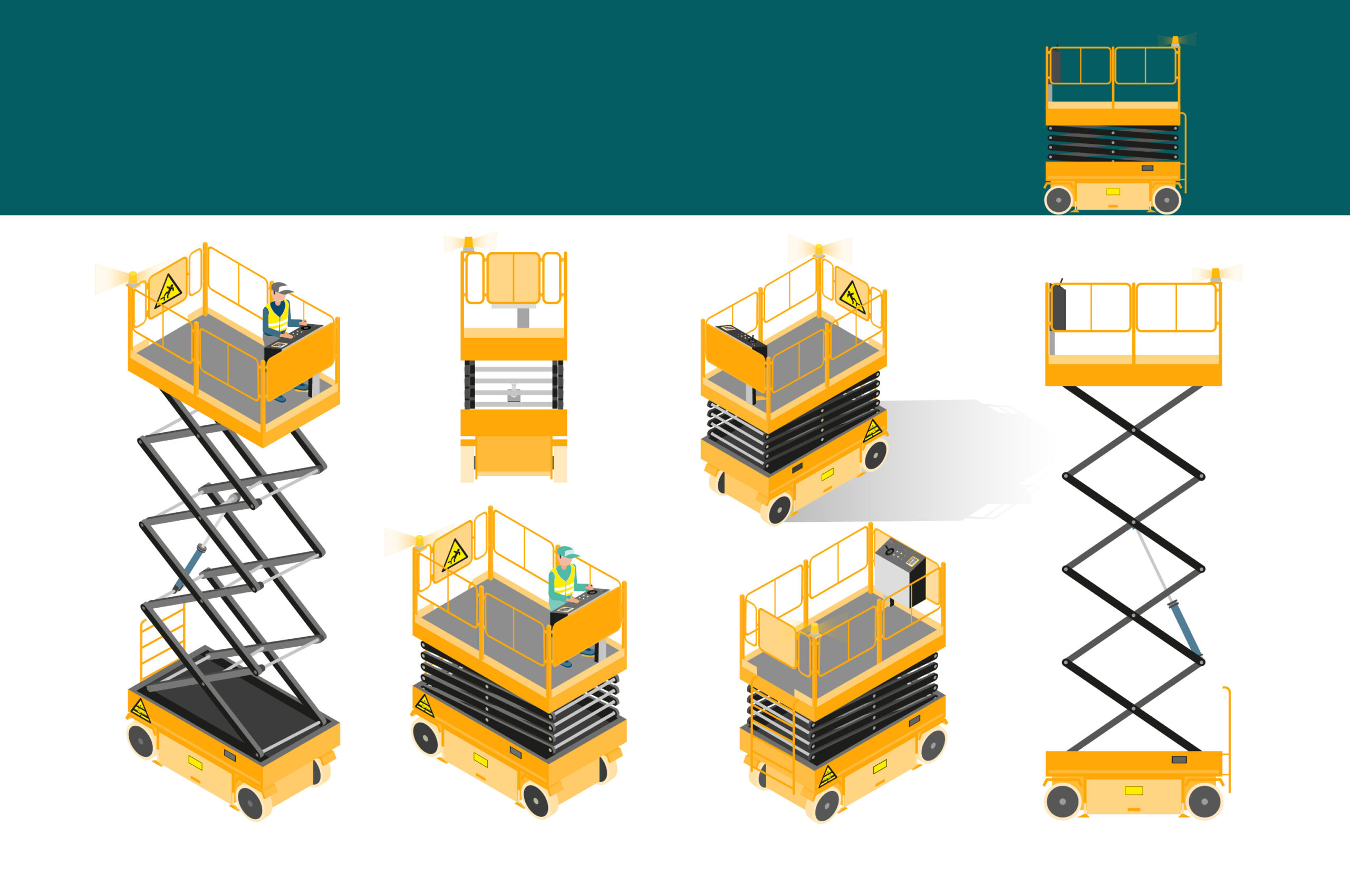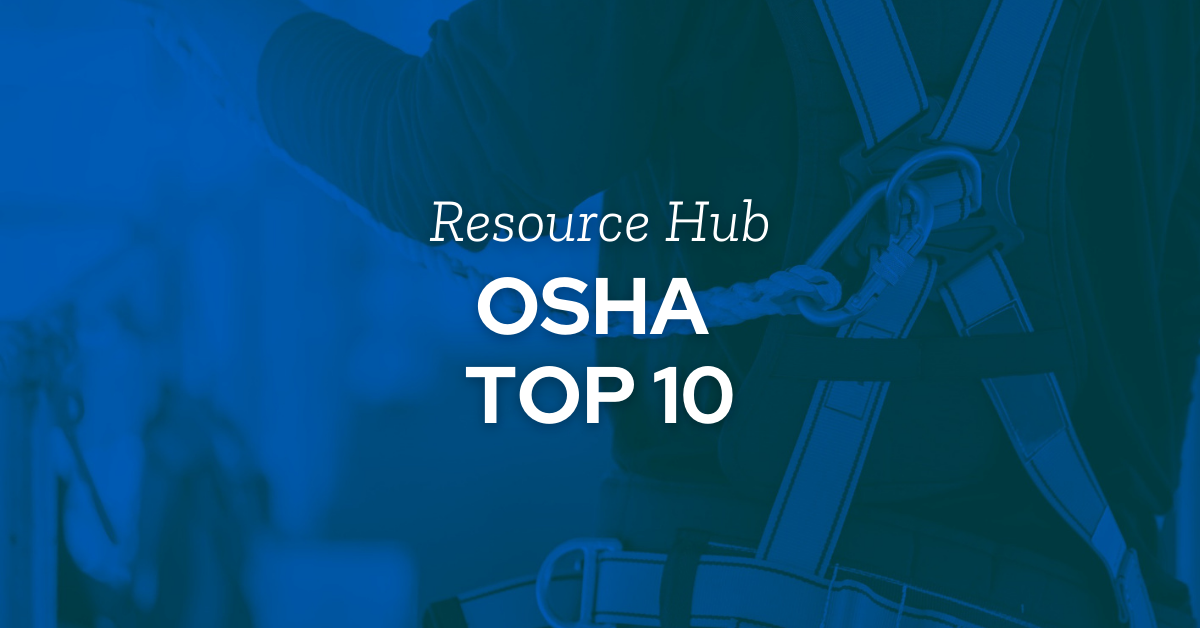Renting an aerial or scissor lift to access elevated signs, roofs, and lights is a fairly common practice. Lift fines for improper use often exceed $16,000, reminding operators of the safety and financial importance of proper operation.
A scissor lift is a portable, hydraulic-powered lift with a platform that can be raised into the air directly above the base. Aerial lifts are vehicle-mounted, boom-supported aerial platforms, also known as cherry pickers or bucket trucks, and are used to access facility lighting and other above-ground job sites. Employers must take measures to ensure the safe use of lifts by their workers if they are required to use this equipment. The major causes of injuries and/or fatalities are falls, electrocutions, collapses, and/or tip-overs.

Hazards Associated with Scissor Lifts
Lifts falling over or workers slipping off of the platform if:
- The lift is used during bad weather or high winds
- The lift is positioned on soft or uneven ground
- The lift is overloaded with heavy objects
- The lift is used with guardrails removed
- The lift is driven over uneven, unstable ground
- The lift is used in an elevated position or used with brakes that are not properly set.

Hazards Associated with Aerial Lifts
The following hazards can lead to personal injury or death:
- Fall from an elevated level
- Objects falling from lifts
- Tip-overs
- Ejections from the lift platform
- Structural failures (collapses)
- Electric shock (electrocutions)
- Entanglement hazards
- Contact with objects
- Contact with ceilings and other overhead objects


Do you know everything you need to know about the 10 most frequently cited Occupational Safety and Health Administration standards? In this series, we’re exploring the most common OSHA violations, one by one.
Be sure when renting any piece of equipment that all manuals are maintained with the rented equipment. Make sure to check for the need for fall protection (use of a harness or strap) and scaffold training before using a lift. Fall protection and training (in accordance with CFR 1910.66) are required whenever an aerial lift is used.
OSHA Violations – Caught by Drive-By
OSHA cited two auto dealers for use of an aerial lift without proper training and fall protection (harness). One facility used an aerial lift to trim trees and another facility rented an aerial lift from a local vendor to change lights in the parking lot. The fines associated with these violations were between $8,000 to $9,000. In both instances, OSHA inspectors merely drove by and observed the violations on the way to other site visits.
Aerial Lift Training Requirements
Only trained and authorized persons are allowed to operate an aerial lift. Training should include:
- Explanations of electrical, fall, and falling object hazards
- Procedures for dealing with hazards
- Recognizing and avoiding unsafe conditions in the work setting
- Instructions for the correct operation of the lift (including maximum intended load and load capacity)
- Demonstrations of the skills and knowledge needed to operate an aerial lift before operating it on the job
- When and how to perform inspections
- Manufacturer’s requirements
- Inadequate ceiling heights
- Drop-offs, holes, or unstable surfaces such as loose dirt, slopes, and floor obstructions
- Overhead obstructions
- High wind and other severe weather conditions, such as ice
- The presence of others in close proximity to the work area.
Aerial Lift Safe Work Practices
- Ensure workers who operate aerial lifts are properly trained in the safe use of the equipment.
- Maintain and operate elevated work platforms according to the manufacturer’s instructions.
- Never override hydraulic, mechanical, or electrical safety devices.
- Never move the equipment with workers on an elevated platform unless the manufacturer permits this.
- Maintain a minimum clearance of at least 10 feet, or 3 meters, away from the nearest energized overhead lines.
- Always treat power lines, wires, and other conductors as energized, even if they are down or appear to be insulated.
- Use a body harness or restraining belt with a lanyard attached to the boom or basket to prevent the worker(s) from being ejected or pulled from the basket.
- Set the brakes and use wheel chocks when on an incline.
- Use outriggers, if provided.
- Do not exceed the load limits of the equipment. Allow for the combined weight of the worker, tools, and materials.
Although renting a lift may seem like a simple process, there are quite a few requirements and hazards associated with their use that can be overlooked. Employers must use due diligence before the use of scissor or aerial lifts to ensure employees are protected during their use to prevent injury.
Related Content
Explore more comprehensive articles, specialized guides, and insightful interviews selected, offering fresh insights, data-driven analysis, and expert perspectives.
